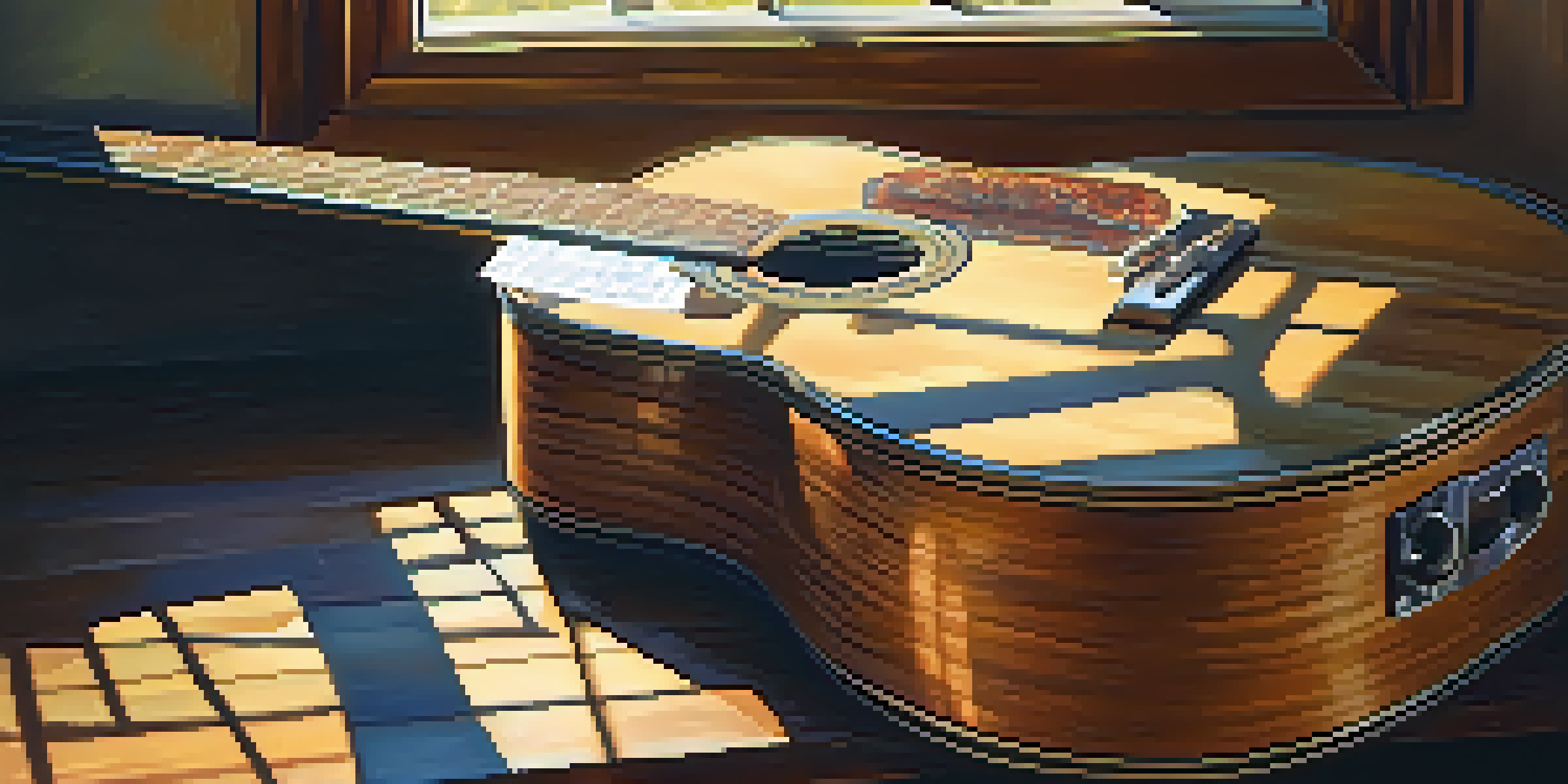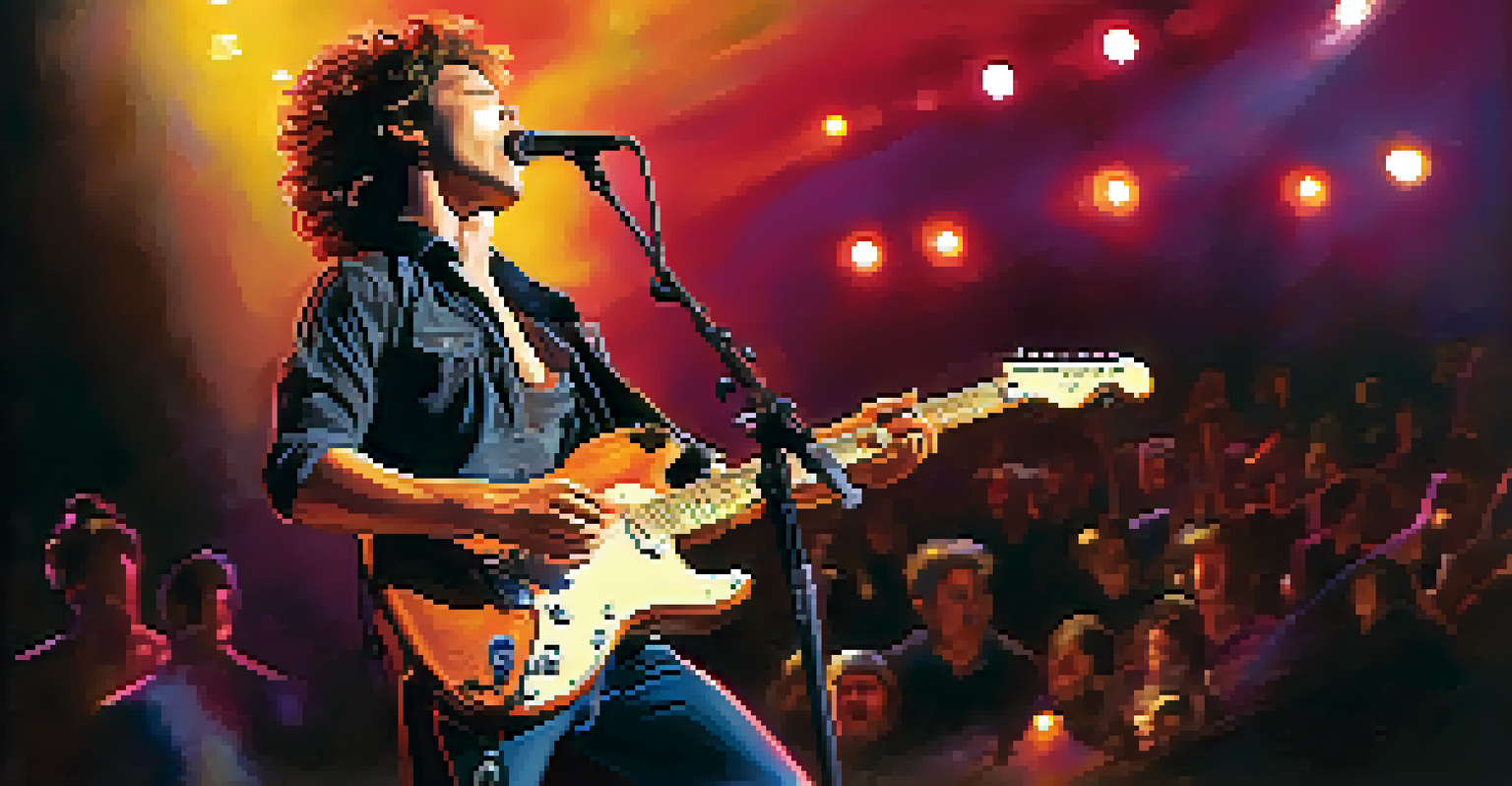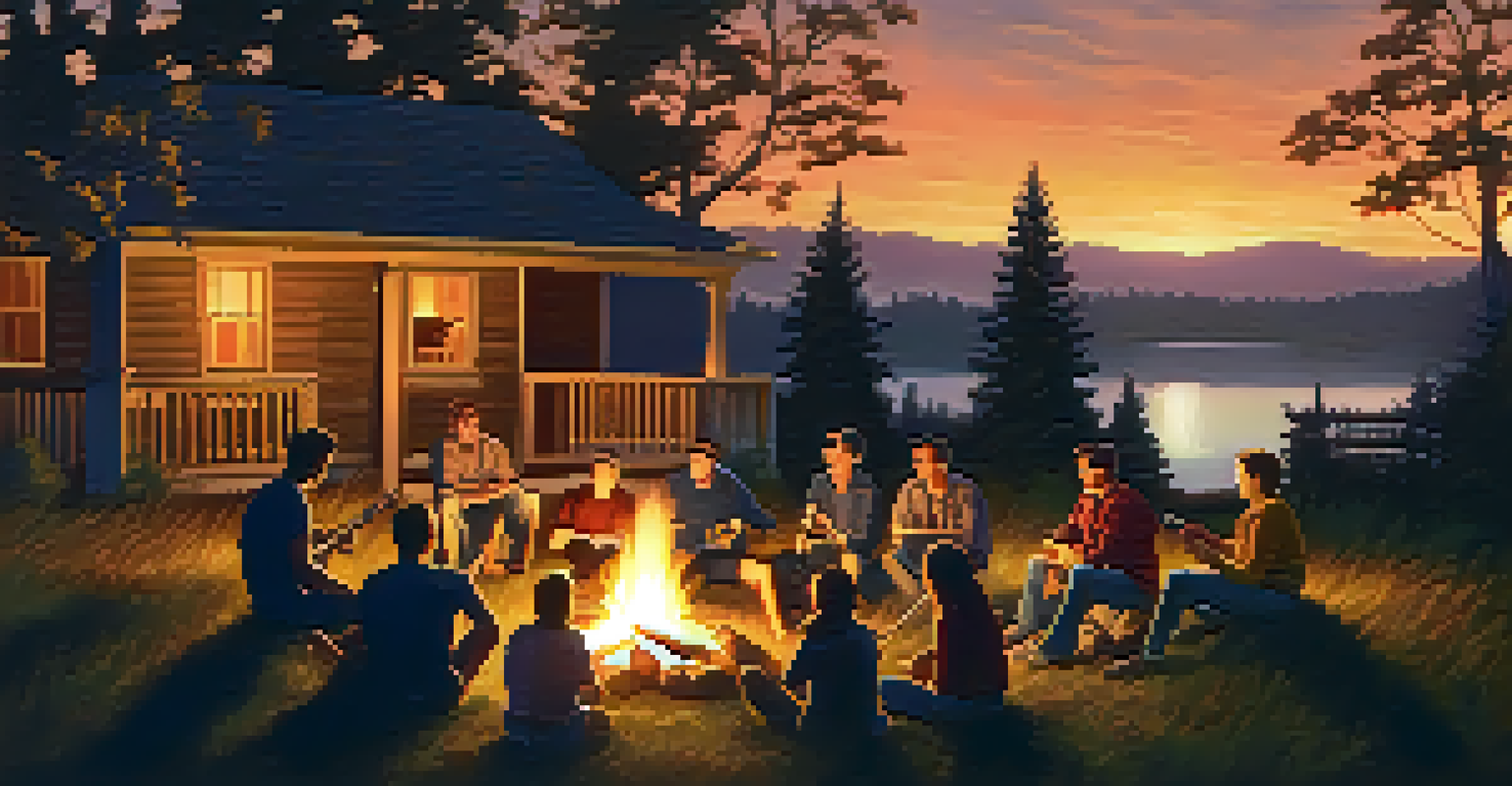The Power of Guitar Music in Crafting Compelling Narratives

Guitar Music: A Universal Language of Emotion
Guitar music transcends cultural boundaries, speaking directly to the heart. Whether it’s the soothing strum of an acoustic guitar or the electrifying riffs of an electric guitar, the instrument conveys emotions that words often struggle to express. This emotional depth allows artists to tell stories that resonate deeply with listeners, creating a powerful connection.
Music is the shorthand of emotion.
For instance, think about how a simple melody can evoke memories of love, loss, or nostalgia. The way a fingerstyle guitar piece can bring tears to your eyes or make you smile is a testament to its universal appeal. This emotional resonance is a key ingredient in crafting compelling narratives, as it pulls the audience into the story being told.
Ultimately, guitar music serves as a bridge, uniting diverse experiences and emotions. It enhances the storytelling experience, allowing both the creator and the listener to engage on a profoundly emotional level.
Setting the Scene: Guitar Music and Atmosphere
Setting the right atmosphere is crucial in storytelling, and guitar music has an uncanny ability to do just that. A gentle acoustic melody can create an intimate setting, while a powerful electric guitar solo can ramp up the tension in a narrative. This atmospheric quality allows guitar music to complement various storytelling mediums, from film scores to live performances.

Consider how a dramatic scene in a movie might be enhanced by the haunting notes of a guitar. The sound can heighten suspense or evoke a sense of adventure, drawing the audience further into the narrative. Just as a painter uses colors to depict mood, musicians use guitar tones to create an atmosphere that supports the story.
Guitar Music Evokes Deep Emotions
Guitar music transcends words, conveying emotions that resonate deeply with listeners and enhance storytelling.
Therefore, when guitar music is woven into narratives, it not only enriches the experience but also helps to clarify the emotions and themes being explored. This synergy between music and storytelling is what makes guitar music a powerful tool for narrative crafting.
Character Development Through Guitar Solos
Guitar solos can be a reflection of a character’s journey, offering insight into their emotions and motivations. Just as dialogue reveals a character’s thoughts, a well-placed guitar solo can express feelings that words cannot capture. This aspect of guitar music allows for deeper character development in narratives.
Guitar is the most emotional instrument. It has a soul.
For example, a character experiencing inner turmoil might be accompanied by a frantic and dissonant guitar solo, while a moment of realization could be marked by a soft, melodic riff. This musical representation adds layers to the character’s personality and helps the audience understand their struggles and triumphs on a deeper level.
In this way, guitar music becomes an integral part of character arcs, guiding the audience through the ups and downs of their journey. It’s a powerful narrative device that transforms a simple story into a rich tapestry of human experience.
The Role of Guitar Music in Cultural Narratives
Guitar music is deeply rooted in cultural narratives, often reflecting the values, struggles, and stories of specific communities. Genres like folk, blues, and rock have their own unique histories and tales, conveyed through the guitar. This connection to culture allows guitar music to enrich narratives, making them more relatable and impactful.
Take, for instance, the blues—a genre born from the African American experience in the early 20th century. The guitar serves as a voice for those who have endured hardship, telling stories of pain, resilience, and hope. This cultural significance transforms guitar music into a powerful narrative tool that resonates with listeners on multiple levels.
Cultural Narratives Through Guitar
Guitar music reflects the values and struggles of specific communities, enriching narratives and amplifying their authenticity.
Thus, integrating guitar music into storytelling not only honors cultural histories but also amplifies the authenticity of the narrative. It creates a dialogue between the past and present, allowing stories to be told in a way that is meaningful and relevant.
Guitar Music as a Tool for Building Tension
Tension is a critical element in storytelling, and guitar music can effectively heighten this suspense. The use of dissonant chords, rapid strumming, or a slow build-up in a guitar piece can create an exhilarating sense of anticipation. This musical tension keeps the audience on the edge of their seats, eager to see how the narrative unfolds.
Imagine a climactic scene in a thriller, where the protagonist is racing against time. The frantic strumming of a guitar can mirror the urgency of the moment, pulling the audience further into the action. This ability to synchronize music with the narrative pace enhances the overall experience.
Ultimately, guitar music acts as an emotional amplifier, heightening tension and drawing the audience into the story's climax. This interplay between music and narrative is essential for creating memorable storytelling moments.
The Connection Between Guitar Music and Memory
Guitar music has a unique ability to evoke memories, often reminding us of specific moments in our lives. This connection to memory can be harnessed in storytelling to create relatable narratives that resonate with the audience. The emotional recall triggered by a familiar melody can transport listeners back to significant experiences.
For instance, a nostalgic guitar riff might evoke memories of a summer vacation or a cherished relationship. By tapping into these emotions, storytellers can create narratives that feel deeply personal, allowing the audience to connect their own experiences to the story being told.
Tension Building with Guitar Sounds
The use of dissonant chords and dynamic strumming in guitar music effectively heightens tension and suspense in storytelling.
This powerful relationship between guitar music and memory reinforces the idea that music is not just an accompaniment but a vital component of storytelling. It helps to create a shared experience between the storyteller and the audience, making each narrative more impactful.
Guitar Music: A Bridge to Shared Experiences
At its core, storytelling is about sharing experiences, and guitar music acts as a bridge that connects people. Whether performed live or recorded, guitar music has a way of bringing individuals together, fostering a sense of community. This shared experience enhances the narrative, making it more relatable and accessible.
Consider how a group of friends might gather around a campfire, sharing stories accompanied by the strumming of a guitar. This setting creates a sense of belonging, where everyone adds their voice to the narrative. The music becomes a catalyst for connection, enhancing the overall storytelling experience.

In conclusion, guitar music is more than just a backdrop; it’s a vital element in crafting compelling narratives that resonate with audiences. By fostering connection, emotion, and shared experiences, guitar music enriches storytelling in ways that are both profound and lasting.